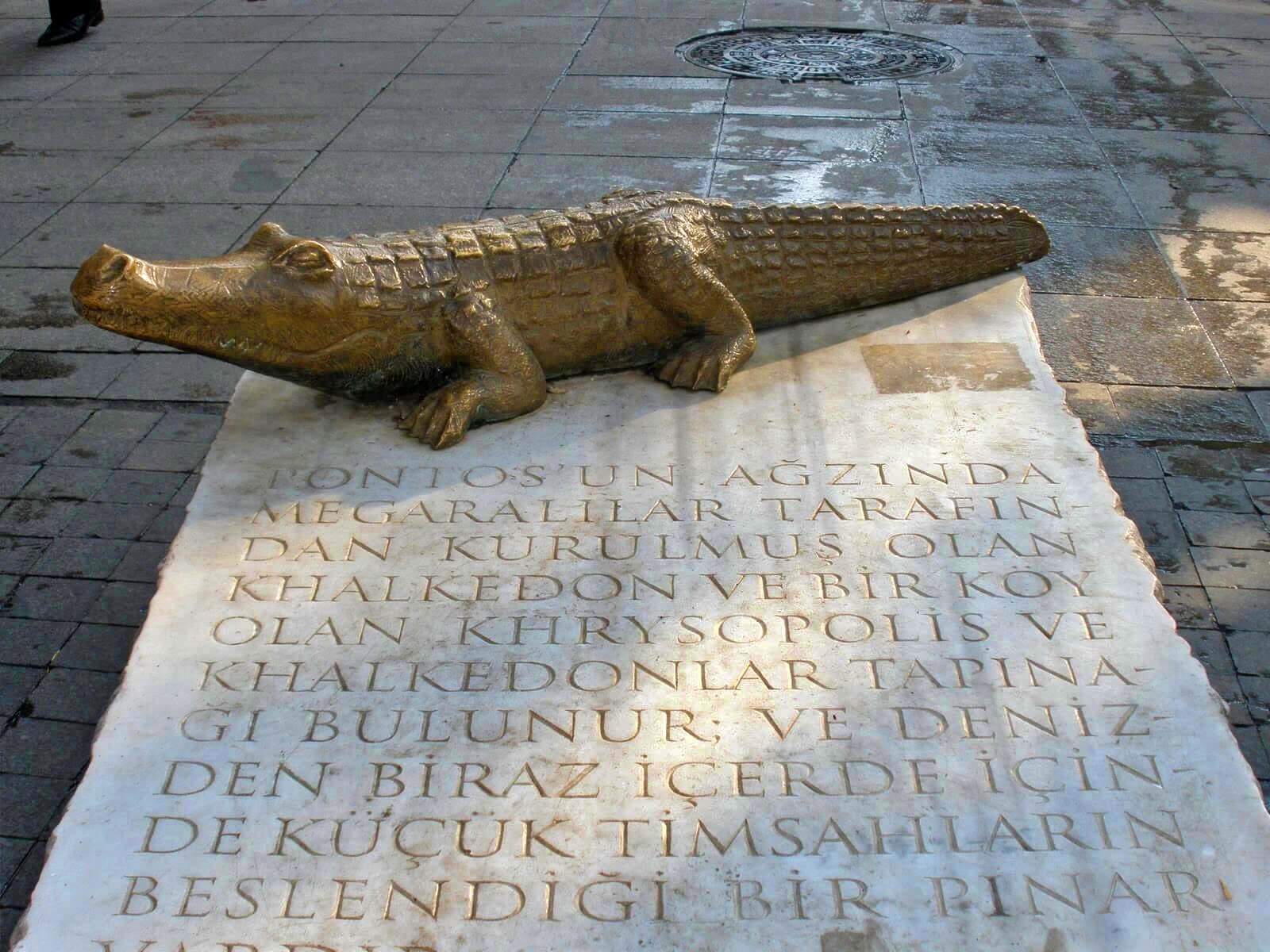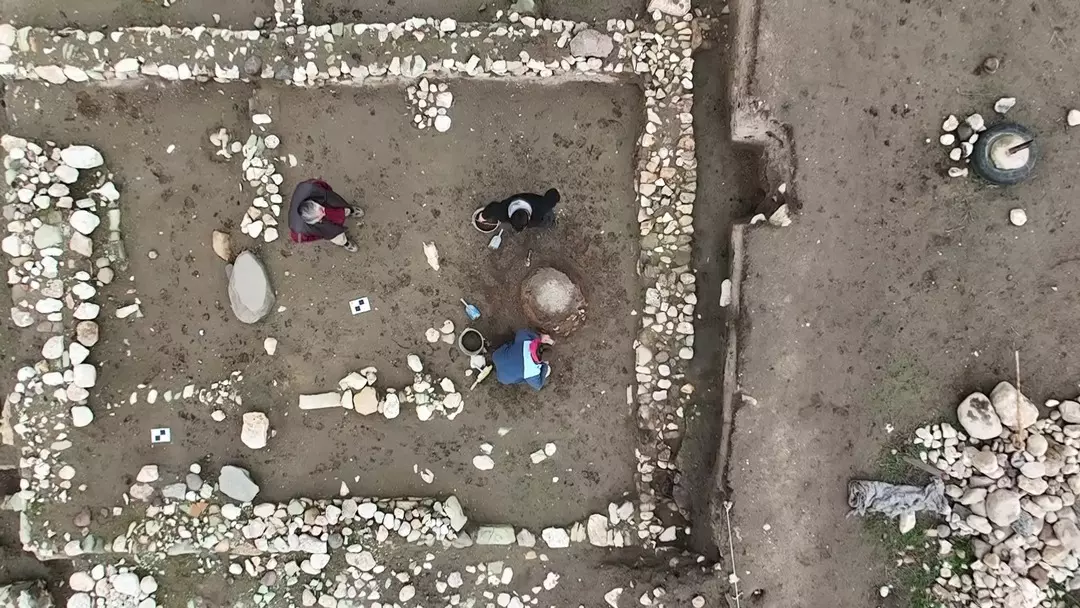The Enigmatic Crocodile of Kadıköy: A Symbol of History and Myth
Nestled in the heart of Kadıköy, one of Constantinople’s/Istanbul’s most vibrant and culturally rich districts, a peculiar bronze statue of a crocodile stands as a testament to the intricate weave of history, myth, and the power of interpretation. Located near the Armenian church of Surp Takavor, this statue might not immediately capture the attention of every passerby, yet it is steeped in layers of historical references and cultural significance that make it a fascinating symbol within the urban landscape of the city.
The Historical Context: Strabo’s Geographical Reference
The crocodile statue in Kadıköy draws its significance from an ancient text by Strabo, a Greek geographer, philosopher, and historian. In the fourth chapter of the twelfth book of his monumental work "Geography," Strabo makes a curious reference:
"In this last country, at the mouth of the Pontus, lies Chalcedon, founded by the Megarians, the people of Chrysopolis, and the temple of Chalcedon; and slightly above the sea, the country has a spring called Azaritia, which raises small crocodiles."
This statement has puzzled historians and scholars for centuries. Indeed, Greek settlers from Megara founded Chalcedon, the ancient name for what is now the Kadköy district, which was a well-known city in antiquity. However, the mention of crocodiles in this region, particularly in the context of the climate and environment of the area, which are far from conducive to such creatures, raises many questions.
The Mystery of the Crocodiles: A Matter of Misinterpretation?
The mention of crocodiles in Strabo’s text has led to various interpretations and debates among scholars. The most accepted theory is that Strabo’s reference to crocodiles might have been the result of a translation error or a misunderstanding of the original term. Given the Mediterranean climate of Istanbul, which is far too cool to support a population of crocodiles, it seems unlikely that these reptiles ever inhabited the area.
One possible explanation is that Strabo might have been referring to a type of large lizard rather than an actual crocodile. The term he used could have been misinterpreted over centuries, eventually leading to the belief that crocodiles once roamed the area. This theory is supported by the fact that no archaeological evidence has been found to suggest that crocodiles lived in Chalcedon during the time Strabo was writing, between 29 B.C. and 7 A.D.
Another intriguing possibility is that Strabo’s description may have been conflated with a similar-sounding place in Egypt, where crocodiles were indeed prevalent, and the reference to "Azaritia" may have been a nod to the Nile or one of its tributaries. However, this remains speculative, as there is no concrete evidence to support this theory either.
The Symbolism of the Statue: Between History and Modern Interpretation
Regardless of the accuracy of Strabo’s account, the crocodile statue in Kadıköy has taken on a life of its own. The modern statue, with blood added to its depiction to give it a more dramatic and bloody appearance, has become an emblem of the district, standing alongside the Bull of Kadıköy as one of its most recognizable symbols.
The statue’s presence serves as a peculiar homage to the ancient geographer’s visit to the region, whether or not his account was entirely accurate. It embodies the blending of history and myth, showing how a single line from an ancient text can inspire a tangible, modern-day artifact that continues to provoke curiosity and discussion among those who encounter it.
The Broader Cultural Impact
The Crocodile of Kadıköy is more than just a statue; it is a reflection of how urban myths and historical interpretations can shape the identity of a place. In this case, the statue serves as a reminder of Kadıköy’s deep historical roots, dating back to its days as Chalcedon. It also illustrates the ongoing fascination with classical texts and how they continue to influence modern cultural and artistic expressions.
In a city as old and layered as Istanbul, where history and modernity coexist in a dynamic and often bewildering blend, the crocodile statue is a fitting symbol. It connects the present with the past, reminding locals and visitors alike of the stories, both real and imagined, that make Istanbul the unique city it is today.
The Crocodile’s Legacy
The bronze crocodile of Kadıköy is more than just a curious piece of street art. It is a powerful example of how history can be interpreted, misinterpreted, and reinterpreted across time. Whether Strabo’s reference to crocodiles was a simple error or a complex metaphor, the statue has become an integral part of Kadıköy’s cultural landscape, symbolizing the district’s rich historical tapestry and the enduring influence of ancient texts.
As Istanbul continues to evolve, the crocodile statue stands as a reminder of the city’s ability to embrace and integrate its past into the bustling, ever-changing life of the present. It serves as a testament to the stories that have shaped not just Kadıköy but the broader historical and cultural narrative of Istanbul itself.










